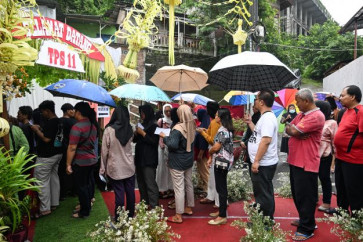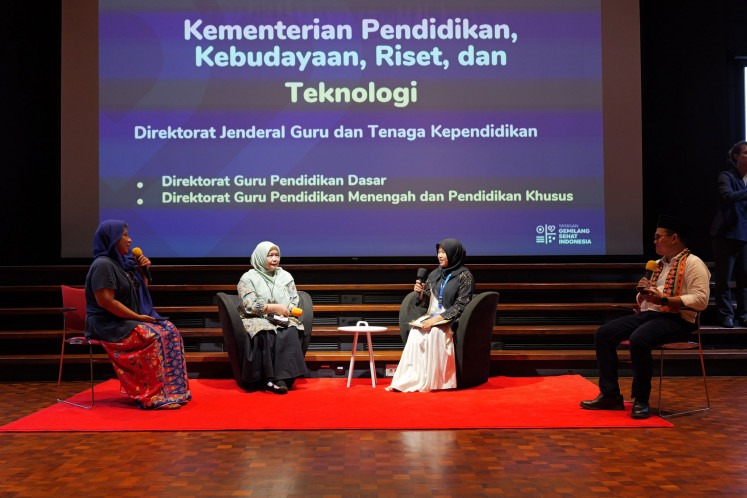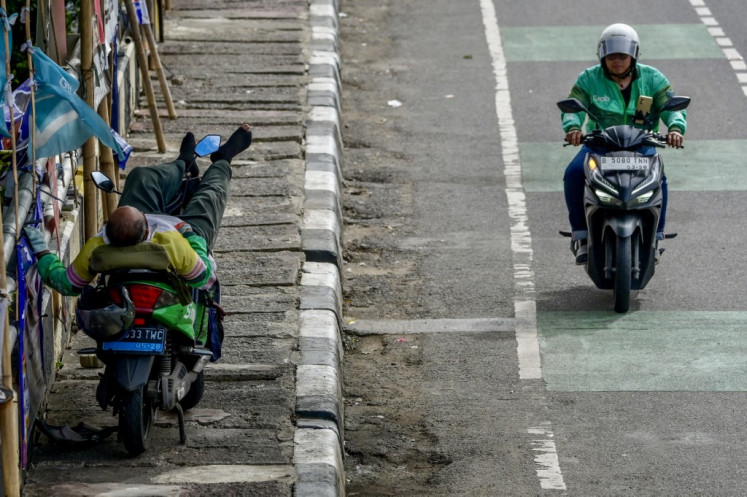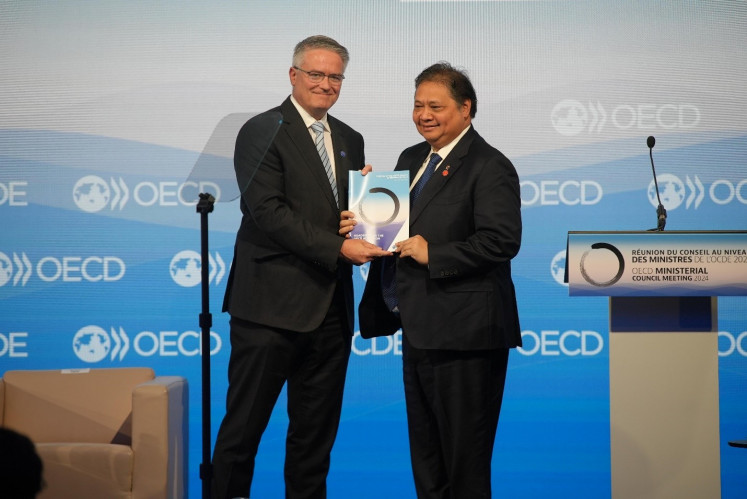Where to stroll in a city where ‘nobody wants to walk’
With urban walking gaining recent traction in Jakarta, here are our top five places for taking an idle stroll in the capital.
Change Size
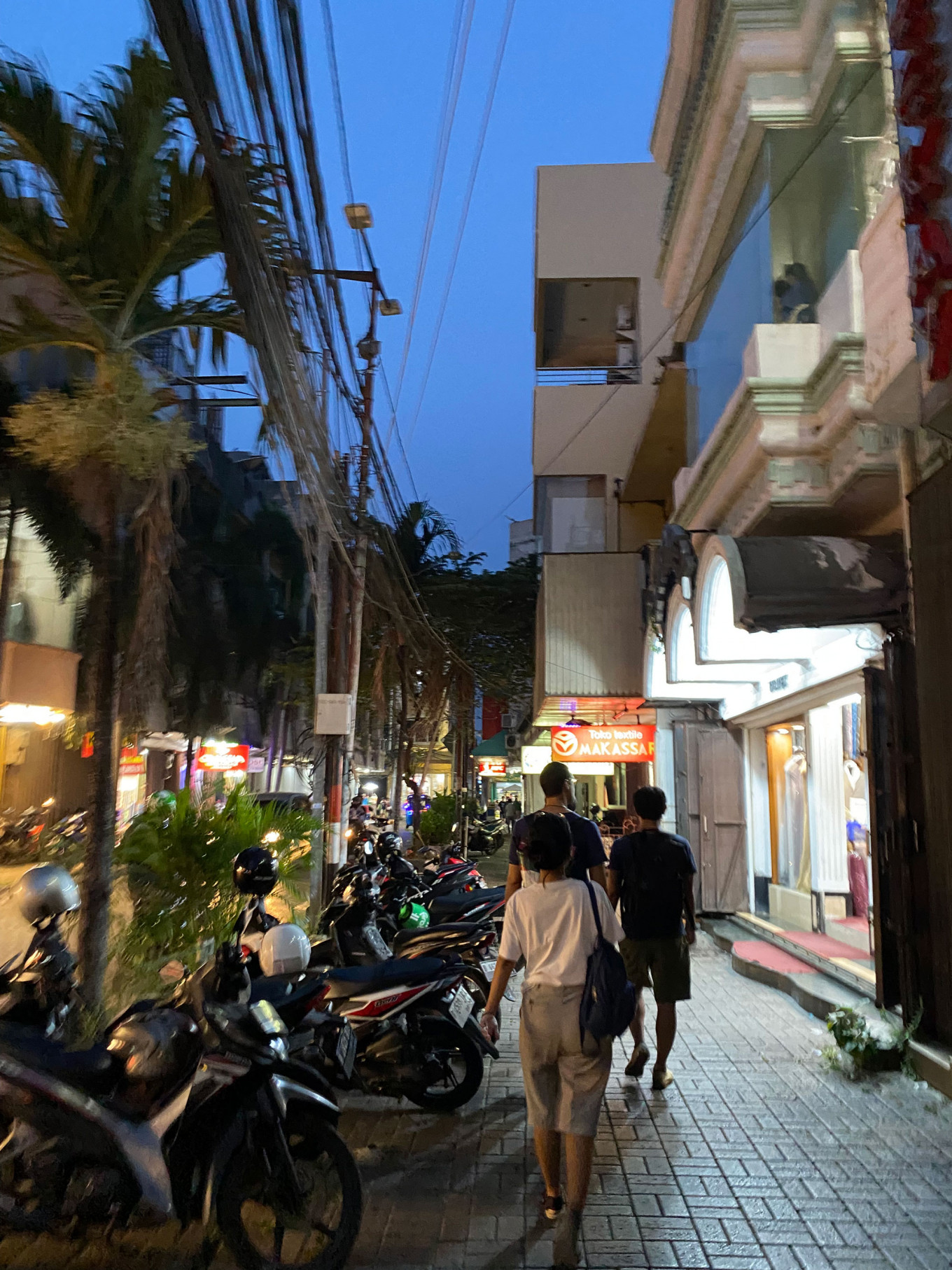 Twilit tour: A group of people take a walking tour organized by Rame Rame Jakarta on May 13, 2023 to explore the bustling streets of Pasar Baru, Central Jakarta. (Courtesy of Harriet Crisp)
Twilit tour: A group of people take a walking tour organized by Rame Rame Jakarta on May 13, 2023 to explore the bustling streets of Pasar Baru, Central Jakarta. (Courtesy of Harriet Crisp)
W
alking around Jakarta is not at the top of most people’s list of fun weekend activities, with one article in The New York Times a few years back calling Jakarta “the city where nobody wants to walk”.
Yet in recent years, urban walking has gained traction in the capital, with groups like Rame Rame Jakarta, Jalan Gembira and Gang.Gang.An highlighting how some aspects of the city can only be fully appreciated on foot.
Meanwhile, groups like Koalisi Pejalan Kaki (Pedestrian Coalition) are pushing for local administrations to make the country’s cities more walkable by installing better pavements and promoting public transportation.
And away from its busy thoroughfares, Jakarta’s neighborhoods and districts are filled with sights and sounds: generations-old restaurants, small parks and the odd historic landmark waiting to be discovered by aimless wandering, alone or with a few friends, and speaking to fellow passersby on the streets.
We’ve compiled a list of our favorite places for flânerie in Jakarta, though we don’t suggest you walk nyeker (barefoot), like Coldplay's Chris Martin apparently did.
1. Pasar Baru, Central Jakarta
First developed in 1820, Pasar Baru was once an upmarket shopping district. It is known for its large ethnic Chinese and Indian communities and is arguably one of the best places to go for a weekend stroll.
Here, you can find meandering alleyways that lead to one of Jakarta’s oldest klenteng (Chinese temple), Sin Tek Bio, which is thought to have been built in 1698 and retains its original features.
Wind your way through the area’s streets and covered markets to Jl. Pintu Air Raya and enter what looks like a private housing complex to find Toko Kopi Maru, a cafe based in the family home of Tio Tek Hong, the founder of Indonesia’s first record label.
Across the street is Istana Mall, mostly empty apart from a selection of batik and, in somewhat sinister contrast, shops stocked with air guns and self-defense gear. Make your way up to the rooftop parking lot to take in a picture-postcard view of the city, looking out over the top of Istiqlal Mosque all the way to the National Monument (Monas).
There is something peaceful about Pasar Baru: the boxes of fresh fruit stacked in alleyways off the main street, the drifting incense, the cats lounging in rectangles of sunlight. And when you’re all done walking, you need only drag your weary body to Pasar Jaya Market to sip an iced orange juice while basking in the blissful coolness of its air-conditioned canteen.
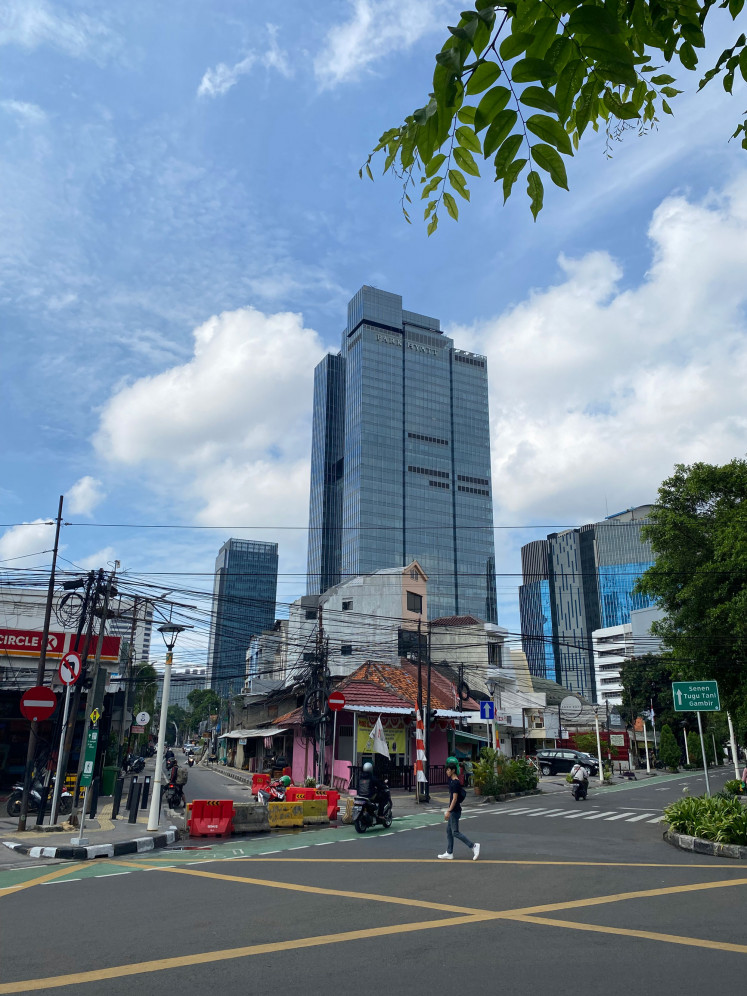
2. Cikini to Gondangdia, Central Jakarta
Depending on the time of year, you might find yourself wandering through the streets of Gondangdia overhanging with bougainvillea shrubs in full bloom, bringing color to the areas beneath elevated train tracks where children play basketball and men tend to small vegetable gardens.
Gondangdia and neighboring Cikini don’t need an introduction. Already solidified in pop culture through Duo Anggrek’s song “Cikini Gondangdia” and from arts and culture enthusiasts thronging key local sites like Taman Ismail Marzuki and the Metropole XXI movie theater, sticking to the main path from Cikini to Gondangdia is enough to keep you entertained.
Notice the abandoned train tracks off Jl. Cikini Kramat, a relic from the past opium trade and the Michael Jackson impersonator on Jl. Pegangsaan Barat. If the bustle gets a bit too much, meander into some of the more peaceful side streets interspersed with classic homes, restaurants and small art galleries like Roh.
Read also: Five-star staycations for your furry friends
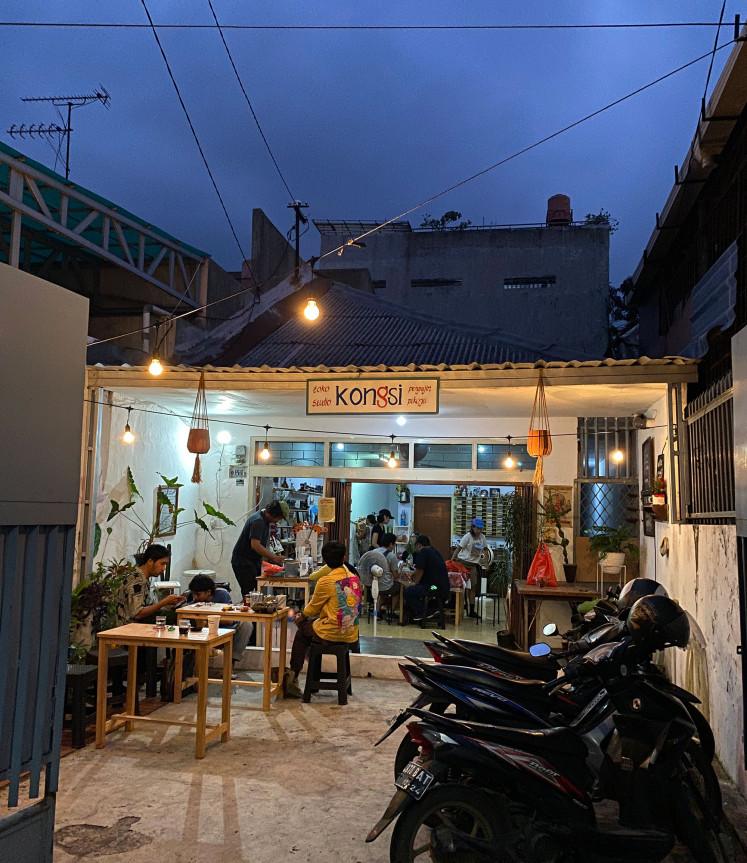
3. Jatinegara, East Jakarta
An unlikely place to consider walking for most, Jatinegara could seem a little intimidating. The vast market area is loud, full of traders and shoppers and mats laid out with all sorts of items from classic vases to pigeons.
Whizzing around the streets are kereta kelinci (children’s train rides), transporting mothers and their children while filling the streets with a blast of dangdut.
But it is the area’s sensory overload that makes it all the better to walk around.
Formerly known as Meester Cornelis, Jatinegara was an important Dutch colonial hub with spaces allocated for the city’s Arab community and large Christian population, as evident in the number of Dutch-era churches still found there.
Today, Jatinegara is putting itself back on the map with local youth and arts movements, and many are traveling to the market area to head to Kongsi8, a humble creative hub, restaurant and shop that holds various events and sessions throughout the week.
4. Glodok, West Jakarta
Jakarta’s Chinatown, one of the largest in the world, is a labyrinth of alleyways filled with a mixture of traditional shop-houses, jengki (postcolonial Indonesian style) buildings and modern architecture.
Known primarily for its culinary offerings and electronics, Glodok is great for walking, as it is steeped in the many historical stages of Jakarta. From a pre-Batavia coastal settlement to the Chinese kampung’s creation by the Dutch colonial administration in the 1700s and its current revival, all these present themselves as you wind your way through the area’s streets.
A personal favorite is the stretch between Kota Station and Glodok’s legendary Pantjoran tea house, down a small covered pathway next to the new MRT development. Along this quiet row of shop-houses are vast murals, trees breaking through a dilapidated building, men selling mystical rings and caricatures and a small garden, complete with water features and an assortment of animals.
Sometimes, the things you experience while walking don’t come with an explanation.
Read also: Five questions for modest fashion influencer Mega Iskanti
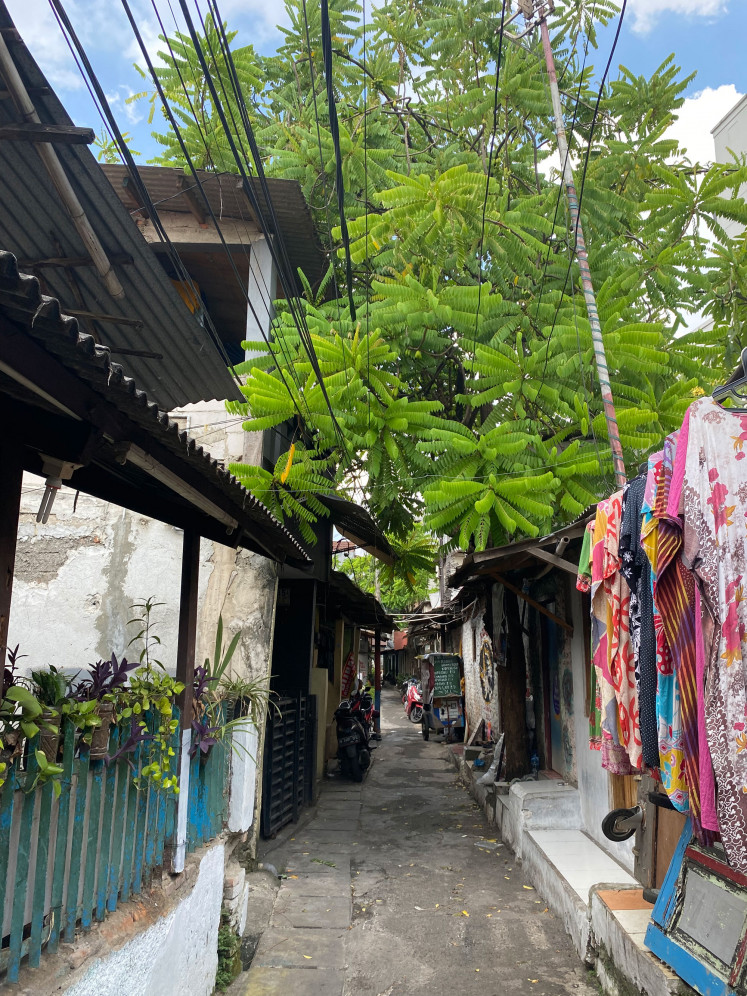
5. Tebet, East Jakarta
Rightly praised for its revamped Tebet Eco Park, Tebet offers walkers much more than just the park that won the President's Design Award 2023 from the SingaporeDesign Council.
Its recent development means that spacious, tree-lined pavements offer welcome shade all the way to Tebet Station and Jl. Gatot Subroto, where walkers can find the Eco Park bus stop.
Perhaps the nicest time to walk around Tebet is in the early evening, when the park is still open and frequented by only a smattering of joggers, its iconic bridge throwing atmospheric light over the trees. At this time the roads are quiet, past the worst of the commuter traffic, and you can weave yourself through the narrow residential streets of West Tebet.
Here among the tightly packed houses are leafy squares. These green spaces, complete with badminton courts or jungle gyms for children, add character to each block and most importantly, offer a moment’s rest for the urban stroller.
After however long you spend meandering, stroking neighborhood cats and nodding at groups of animated men playing chess in pos ronda (neighborhood watch post), you can find yourself at a food stand in front of West Tebet Market, where you can congratulate yourself on your foot count with a satisfying portion of pecel lele (fried catfish) that hits the spot.
Read also: 5 things EV owners want you to know before you trade gas for batteryThis article is part of The Weekender, which comes out on the Saturday edition of The Jakarta Post. It offers a variety of lifestyle and culture articles aimed at enriching your reading experience. Subscribe here to get access to the Saturday edition and all other premium content from the Post.



